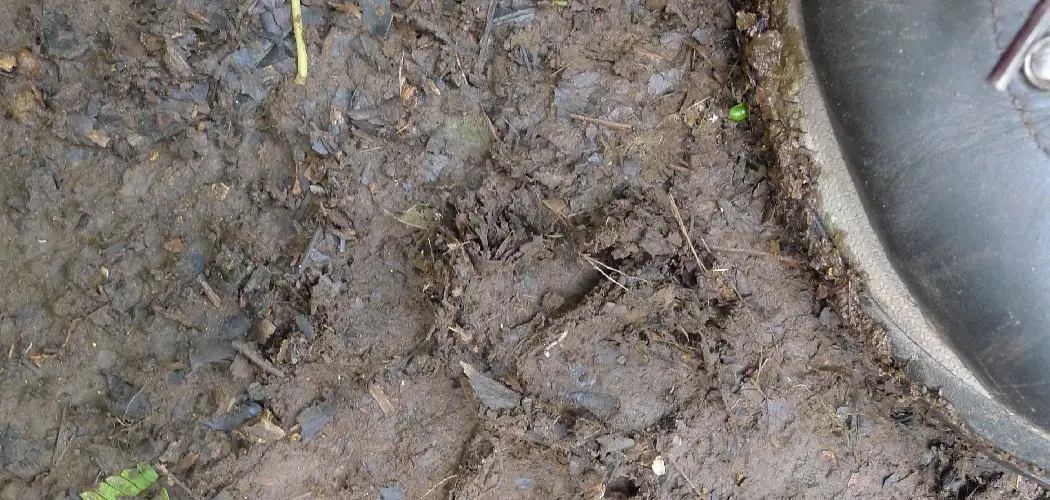Are you frustrated with how messy your yard has become? If so, you are not alone. Mud is a common problem for homeowners, especially in wet weather or areas with a high water table.
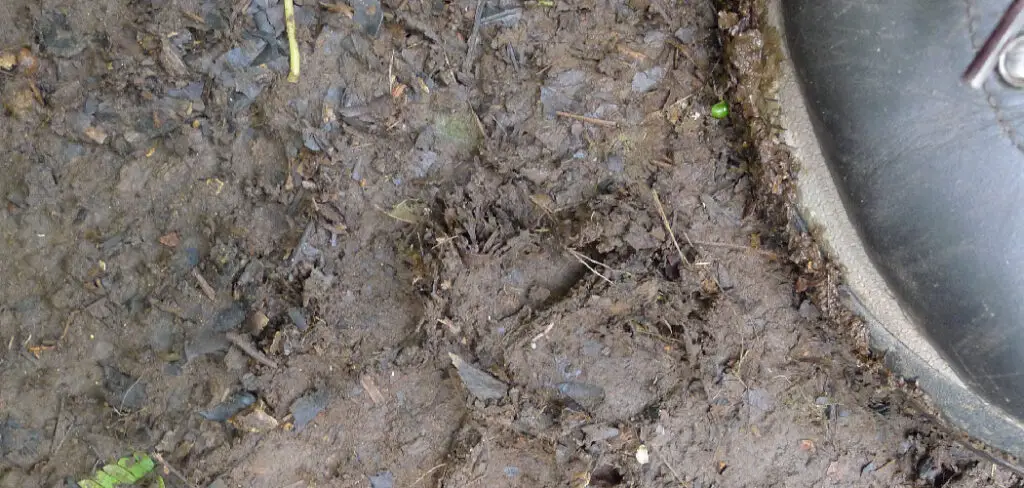
When the weather outside is unpleasant, and your yard becomes a muddy mess, it can be difficult to know how to best deal with the situation.
But don’t worry – there are loads of ways to turn your muddy yard into something functional to make full use of your outdoor spaces.
Whether using landscaping techniques to create usable pathways or simply embracing the mud and utilizing materials like gravel and wood chips which help with drainage, you too can transform your soggy yards into usable spaces again!
This blog post will give detailed advice on how to deal with a muddy yard- so read on for tips!
What Will You Need?
Before you get started, it’s important to consider what materials and tools you will need. Here is a list of items that could be helpful:
- Gravel
- Wood chips or mulch
- Compost
- Landscaping fabric
- Rake
- Shovel
Once you have gathered the necessary materials and tools, you are ready to start.
10 Easy Steps on How to Deal With a Muddy Yard
1. Evaluate the Damage
First, take a look at how bad your mud problem is. Is the area wet due to poor drainage from heavy rains or standing water, or is it simply an overly damp soil issue? Once you’ve evaluated how much work needs to be done, you can move on to the next step.
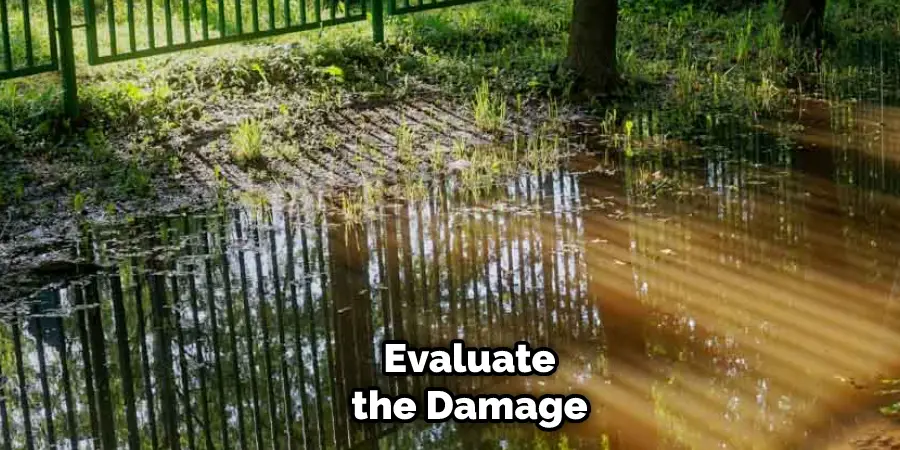
2. Improve Drainage
If your mud problem is due to poor drainage, you’ll need to address this first and foremost. To improve drainage in your yard, consider digging a series of shallow trenches for drainage or using an aerator machine to break up compacted soil. You should also ensure that any downspouts are pointed away from your house’s foundation and toward areas of your lawn where it can be absorbed naturally.
3. Cover Areas with Gravel or Wood Chips
Gravel or wood chips are great materials for covering muddy patches in yards, as they help with absorption and provide a stable footing for walking across them. It’s important that you use enough of the materials so that they are at least two inches deep and lay them in a crisscross pattern to ensure maximum stability.
4. Add Compost
Adding compost to your muddy areas is an excellent way to improve soil structure, moisture levels, and drainage. This will help make sure that your mud patches don’t become too dry or overly wet over time. If you’re not sure how much compost is necessary, a good rule of thumb is to add one inch of compost for every six inches of soil.
5. Install Landscaping Fabric
Installing landscaping fabric can be useful for keeping weeds away from your newly-laid gravel or wood chips and preventing them from sprouting up through the material. This step isn’t necessary, but it does add extra protection against weeds and helps keep everything looking neat.
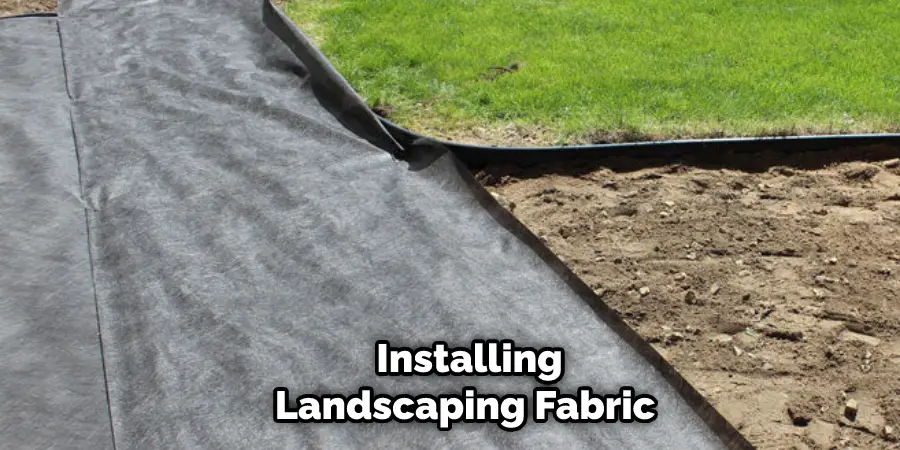
6. Level the Area
Using your rake and shovel, you can level out any uneven or lumpy areas in your yard. This will help ensure that all of the gravel or wood chips are evenly distributed, and that there is no standing water. Moreover, you can use this as an opportunity to shape the yard how you’d like.
7. Add Water
Once everything is leveled out and the area is covered with materials, it’s time to add some water to help settle them in place. Make sure you use enough so that all of the material is moist but not overly saturated. Otherwise, you may end up with more mud than before!
8. Spread Mulch or Compost Around Plants
If your muddy areas have plants growing in them, be sure to spread a layer of mulch or compost around each one before placing the gravel/wood chips down. This will help improve the soil quality of the area and provide your plants with much-needed nutrients. As an added bonus, mulch will also help retain moisture and suppress weeds.
9. Replant any Damaged Plants
If your muddy spot has caused any damage to surrounding plants, it’s a good idea to replant them so that they can start to recover from their ordeal. Ensure you follow all instructions carefully when planting new plants in this area! It’s also important to keep the soil moist and provide plenty of shade to protect them from any harsh sunlight.
10. Monitor Your Mud Problem
Even after following these steps, mud can still be a problem if not monitored correctly. It’s important that you continue to check your yard for standing water or damp areas and make necessary adjustments as needed. You should also monitor how much rain or irrigation is used in the area to ensure that it’s not creating a mud problem.
By following these steps, you can be sure to have the most successful and sustainable solution for dealing with a muddy yard. With the right planning and maintenance, you’ll be able to keep your yard looking great all year round!
Good luck!
5 Additional Tips and Tricks
1. Use Straw or Hay: Covering your yard with a layer of straw or hay can help to reduce mud and mess. Make sure to spread the material evenly over the entire area, and consider layering it on thicker in areas that get particularly muddy.
2. Plant Grass: Planting grass is an effective way to prevent mud from forming in the first place. Choose grass species that are suitable for the environment, such as drought-tolerant varieties or ones that thrive in moist soil conditions.
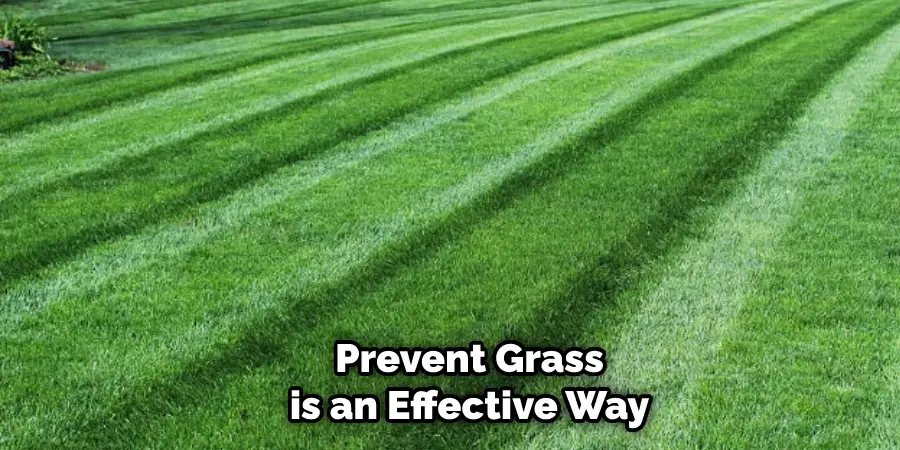
3. Install a Drainage System: If you have a large area prone to flooding or excessive rain runoff, consider installing a drainage system designed to redirect water away from your yard space. This could include trenches, French drains, or dry wells.
4. Create a Path: If you have an area of your yard that is particularly prone to mud, consider creating a path through it with gravel or paving stones. This will make it easier to traverse the area while avoiding mud and mess.
5. Add Decking or Patio Stones: Installing decking or patio stones around areas of your yard that are prone to mud can help keep them clean and dry, as well as add some extra outdoor living space. Be sure to secure them properly, so they don’t become displaced in wet conditions.
With these tips, you’ll be able to have cleaner grounds year-round!
5 Things You Should Avoid
- Avoid walking in the mud. Walking on the wet or muddy ground can cause it to become even more compacted, making it harder to fix.
- Avoid adding any extra soil or sand to your yard unless the soil is tested first. Improperly balanced soils can cause drainage problems and lead to further muddy areas in your yard.
- Avoid waiting too long to address the issue. The longer you wait, the worse it may get, and the more difficult it will be to fix properly.
- Avoid fertilizing wet grass, as this will only add weight and moisture to your soil, creating an ideal environment for mud formation.
- Finally, avoid trying to solve it on your own. If you’re unsure how to fix it, contact an experienced landscaper or other professionals for help. They will be able to identify and diagnose the cause of the mud and provide an effective solution.
- By avoiding these common mistakes, you can easily deal with them in no time. Taking action quickly is essential, as leaving the issue unresolved may lead to further issues down the line.
How Can You Install a French Drain?
Installing a French drain is an effective way. This involves creating a shallow trench filled with gravel and surrounded by filter fabric, which acts as a barrier from the rest of your yard. The trench should be sloped away from the area of your yard where mud typically collects, so that water will flow down it into another location or collection point.
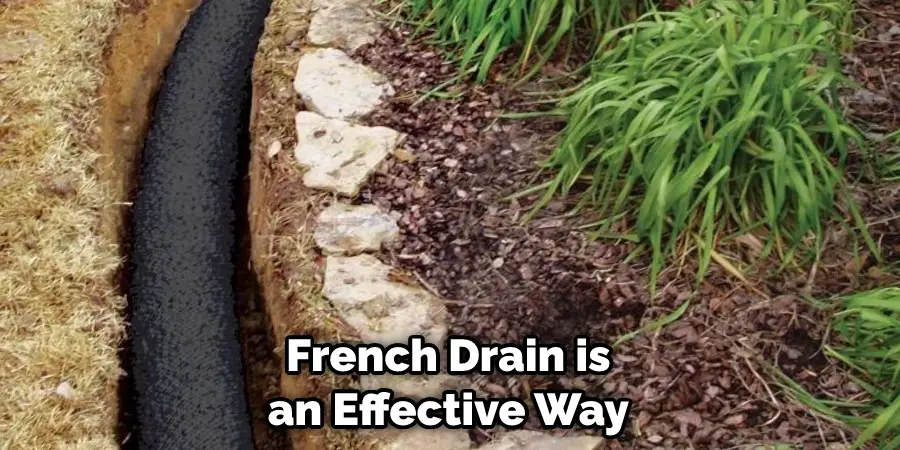
Once you have dug out the trench, fill it with gravel and place the protective filter fabric over the top. Use landscape stakes to secure the fabric along both sides of the trench, then cover it up with more soil or grass clippings.
Finally, connect a drainage pipe to one end of the French drain and then run it away from the area of your yard that is prone to mud.
Make sure to check regularly to ensure that the drainage system is working properly, as well as clean out any debris or dirt that may have built up in the trench.
With a French drain installed, dealing with a muddy yard should be much easier! Proper installation and maintenance will ensure that your yard remains clean and dry for years to come.
Conclusion
Having a muddy yard can be a nuisance, but having the right tools and techniques to tackle it head-on can save you a lot of time, energy, and money in the long run. From investing in quality mud barriers to dampening soil with compost, numerous solutions are available to you.
Ultimately, paying attention to your soil health and following simple practices like maintaining grass height or clingy sowing plants will help ensure that your yard never gets too mucky again.
With the combination of the right products, maintenance, and motivation, you’re now ready to enjoy a clean, dry and healthy yard. Go out there and get started on making your yard look its best!
Hopefully, this guide on how to deal with a muddy yard has provided you with the necessary information and tips needed so you can take action and tackle your muddy yard head-on! Good luck!

